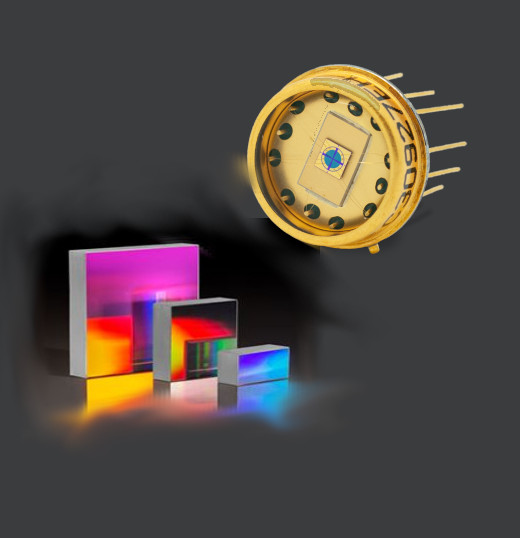Minispectrometers
UV-VIS-NIR
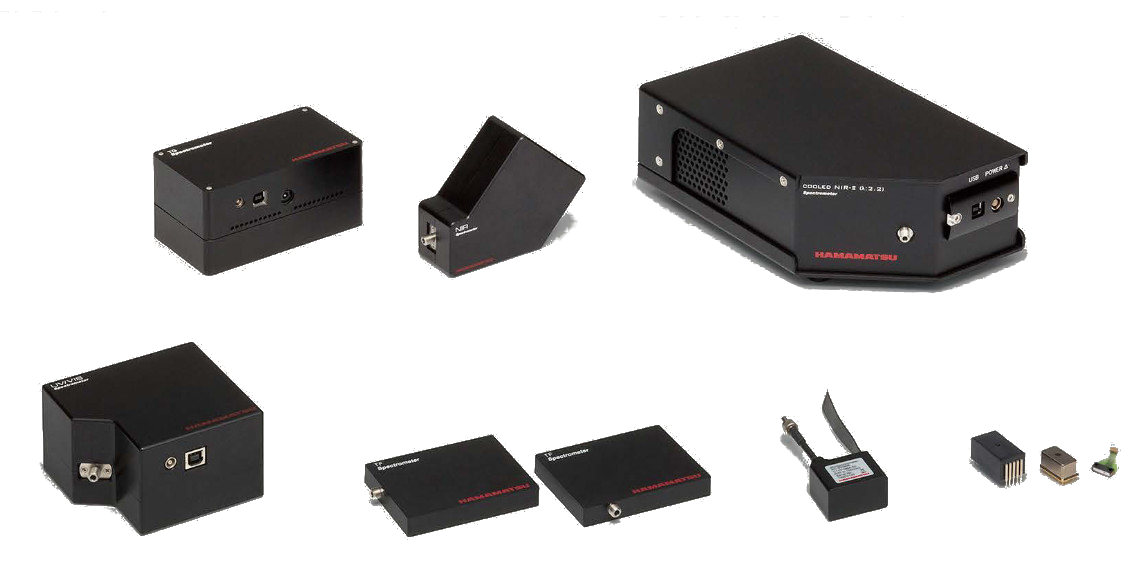
More than 20 types of spectrometers
Full range of the spectrometers acting in the range from ultraviolet to near infrared
Example applications:
· Color measurement
· Measurement of sugar content
· Thickness measurement of thin layers
· Screening of plastics
· Fluorescence measurement
· Environmental analysis
· Mobile measuring device
Minispectrometers
UV-VIS-NIR
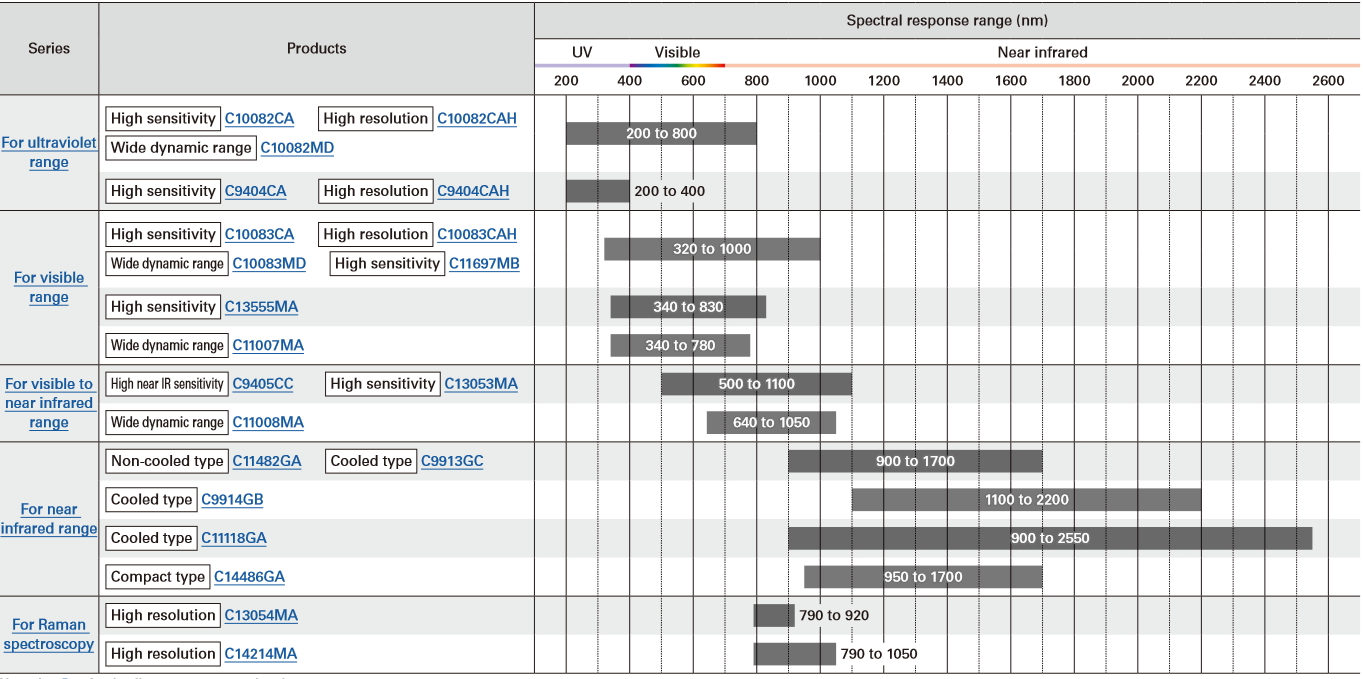
Any questions?
Please contact us
Technical information
- How does a spectrometer work?
- UV-VIS spectrometers
- VIS spectrometers
- VIS-NIR spectrometers
- NIR spectrometers
- Raman spectrometers
- Ocean Optics spectrometer
How does a mini spectrometer work?
Mini spectrometers are compact and inexpensive spectrometers (polychromators).
Technology
The mini spectrometer is a product that integrates Hamamatsu's MOEMS (micro-opto-electro-mechanical-systems) technology, which combines optical technology, including semiconductor devices and optical systems and MEMS technology, with circuitry and software. The detector constituting the heart of the mini spectrometer is a proven Hamamatsu image sensor in analytical and measurement areas. Since Hamamatsu develops its own grating, a grating of various specifications (high resolution, wide spectral range, high diffraction in the ultraviolet region, etc.) can be mounted in the mini-spectrometers.
Configuration
Monochromators are widely used spectrometric devices. Monochromators usually have an exit slit installed along the focal plane of the converging lens (or converging mirror). Polychromators work on the same principle as monochromators, but are designed to enable simultaneous detection of multiple spectra. Mini spectrometers are compact polychromators in which a linear image sensor is placed at the focal plane of the lens/mirror. To make mini spectrometers compact and portable, the focal lengths of the collimating lens/mirror and the focusing lens/mirror are shorter than those of monochromators.
The functions of the main components used in mini spectrometers are described below.
Entrance slit
This is the opening through which the measured light is transmitted. The size of the aperture has a significant impact on optical properties such as spectral resolution and bandwidth. There are two light input methods: optical fiber input and surround light.
Collimating lens/mirror
Light passing through the entrance slit propagates at a certain angle. The collimating lens collimates the light transmitted through the slit and directs it onto the diffraction grating. The diffraction grating splits the incident light directed by the collimating lens into different wavelengths and allows light of each wavelength to pass through or be reflected at a different diffraction angle.
Converging lens/mirror
A converging lens or mirror creates an image of light scattered in wavelengths through a grating onto linearly arranged pixels of the image sensor according to wavelength.
Image sensor
The image sensor converts optical signals that have been scattered at wavelengths by the grating and focused by the converging lens into electrical signals and then outputs them.
miniSPEKTROMETRY UV-VIS
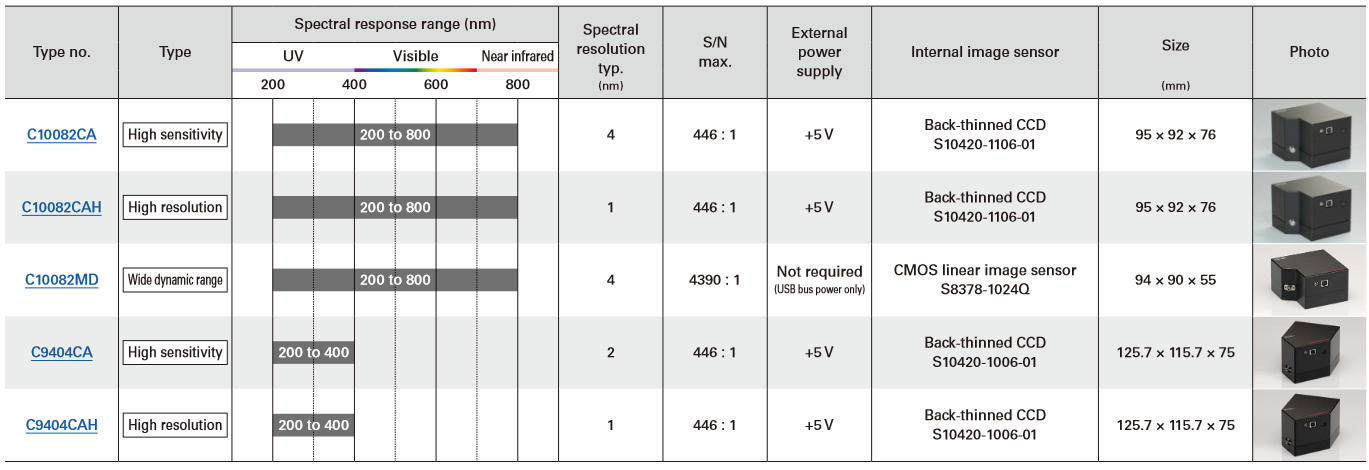
miniSPEKTROMETRY VIS
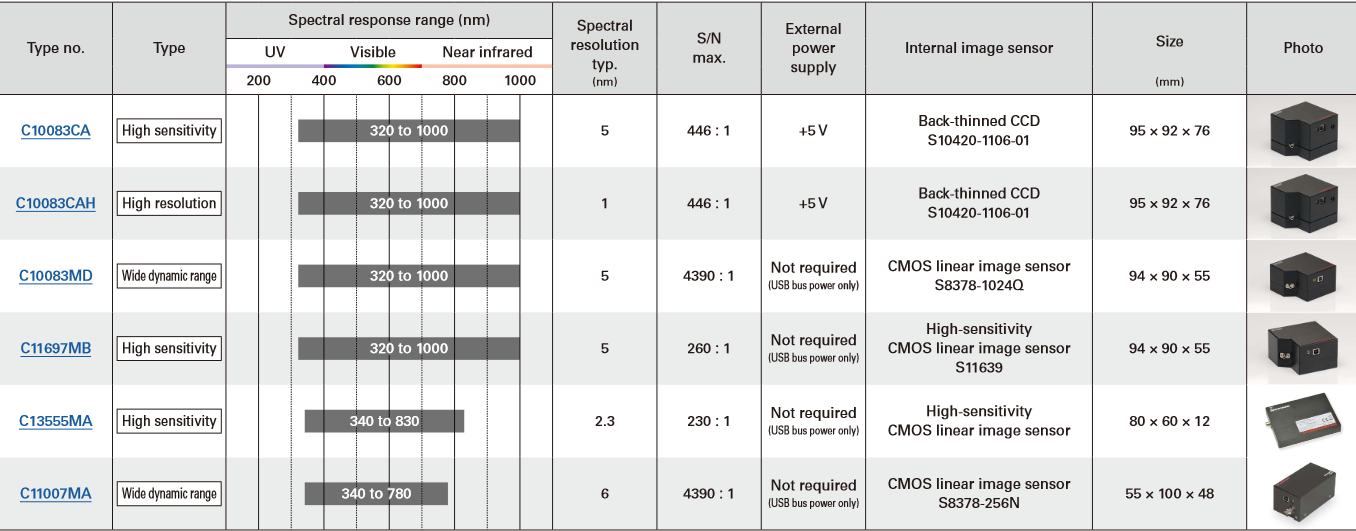
miniSPEKTROMETRY VIS-NIR

miniSPEKTROMETRY NIR
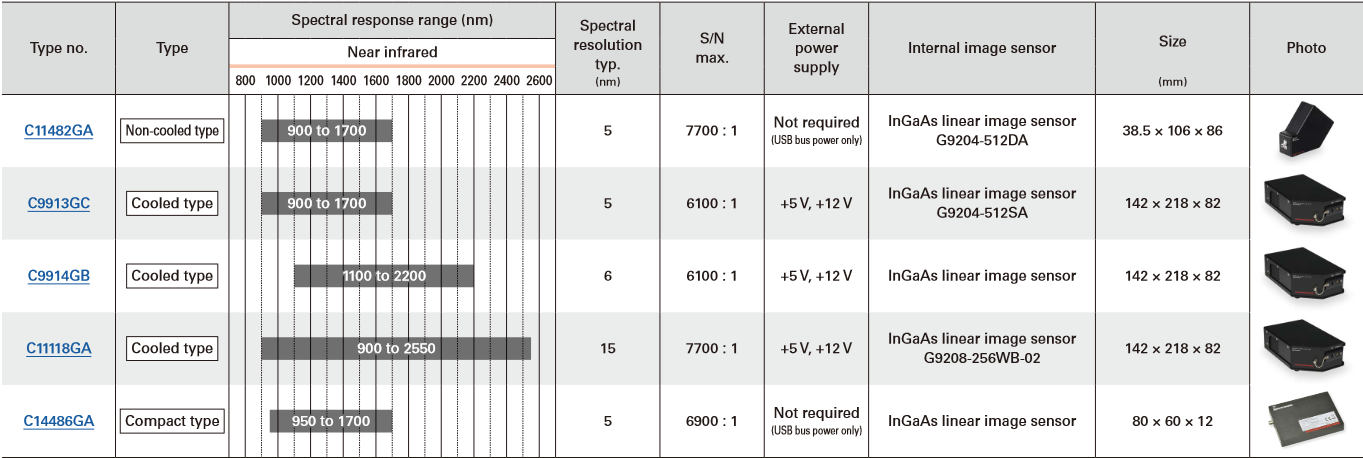
miniSPEKTROMETRY RAMANA

Site in progress.
Due to the changes in the Ocean Optics offer, the introduction of new spectrometers, and the withdrawal of popular models such as the USB2000, USB4000, HR2000 and HR4000 spectrophotometers, we encourage you to contact us directly to obtain all the necessary information.
SUPPLIERS
Our suppliers / partners of these product lines






